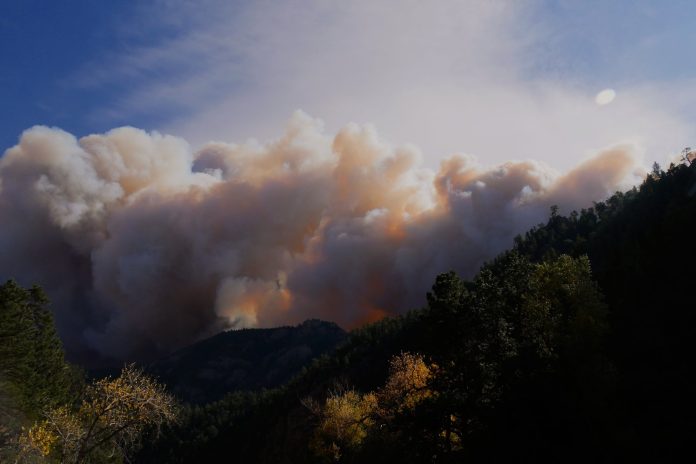In the past five years, there has been a marked increase in wildfires, which have affected 23,750 miles of trails around the United States, which is equal to walking coast-to-coast 10 times. These fires have had a huge impact on outdoor recreation. In the last two years, wildfire has damaged 1,029 recreation sites on national forests, at a cost of $126 million to repair.
The Outdoor Alliance (OA) shares a new policy report, titled Wildfire and Outdoor Recreation in the West, that includes these data points and others to help the outdoor recreation community understand the role that fire plays on our public lands, and asks for support in advocating Congress for better fire policy, including a greater focus on prescribed fire, mitigation and funding for restoration.
These trail and recreation statistics are staggering, but what continues to turn heads is how wildfires burning in remote locations continue to affect the air quality in urban areas on the east coast, including New York City — a place not typically associated with wildfires and their related health and safety concerns.
The situation earlier in June dramatically illustrated that wildfire isn’t just a Western problem, it’s a national problem. And in many cases in the Western U.S. more fire is what scientists say is needed to address the situation and bring the risk of wildfire into check.
That is one of the key takeaways in the OA report.
According to the organization, there is a misconception that climate change is solely responsible for the increase in wildfires getting more severe, however, in reality, this also is due to over a century of policy that dictated federal land managers suppress all fires. That has led to a buildup of fuels around the West, a situation compounded by rising temperatures associated with climate change.
Thus, reducing wildfire risk means taking action at the national level to reduce the fuel available for wildfires — helping forests return to a more historic balance through science-based fuel treatments like ecological forest thinning, prescribed fire and managed wildfire — and also taking action at the local level through home hardening and other strategies that help western communities build resilience wildfire. Outdoor recreation should be a key factor that land managers consider as they work to increase the pace and scale of fuel treatments across the West’s forests, the OA report says.
Such strategies have been shown to be successful, according to Outdoor Alliance. For instance, last summer the Washburn fire burned thousands of acres around Yosemite but spared ancient sequoias in the Mariposa Grove.
Foresters in Yosemite have been using intentionally prescribed fire around the sequoias, which prepared and protected the grove from a higher-severity fire. Old-growth sequoias are meant to withstand frequent fire, and, in fact, need fire to grow and survive. High-severity fires are still a large risk to sequoia groves, and prescribed burns have been successful at reducing those severe fires.
“Climate change and more than a century of failed fire policy have brought Western U.S. forests to a tipping point,” said Jamie Ervin, policy associate at Outdoor Alliance. “With both wildfires themselves, and the policy solutions proposed to address them, posed to have far-reaching effects on outdoor recreation, it is critical that the recreation community be an active and informed stakeholder on this issue. This starts with building an understanding of fire’s ecological role on our landscapes, its role in our culture, and what we can do to build resilience to fire in western forests and communities.”
Fire has a huge impact on outdoor recreation, damaging trails, climbing areas, and campgrounds. Post-fire landscapes often face secondary issues like erosion, flooding, and hazardous trees. Even when a landscape isn’t directly threatened by fire, smoke from wildfires has become a huge problem for air quality, making outdoor recreation unsafe through months-long periods.
It is clear based on the data points outlined within the Wildfire and Outdoor Recreation in the West paper that fires are more severe today. Understanding why this is the case, and what needs to be done for better fire policy are important to advocate to Congress.
To take action around what decision-makers can do to address the wildfire situation, visit: https://www.outdooralliance.org/wildfire








